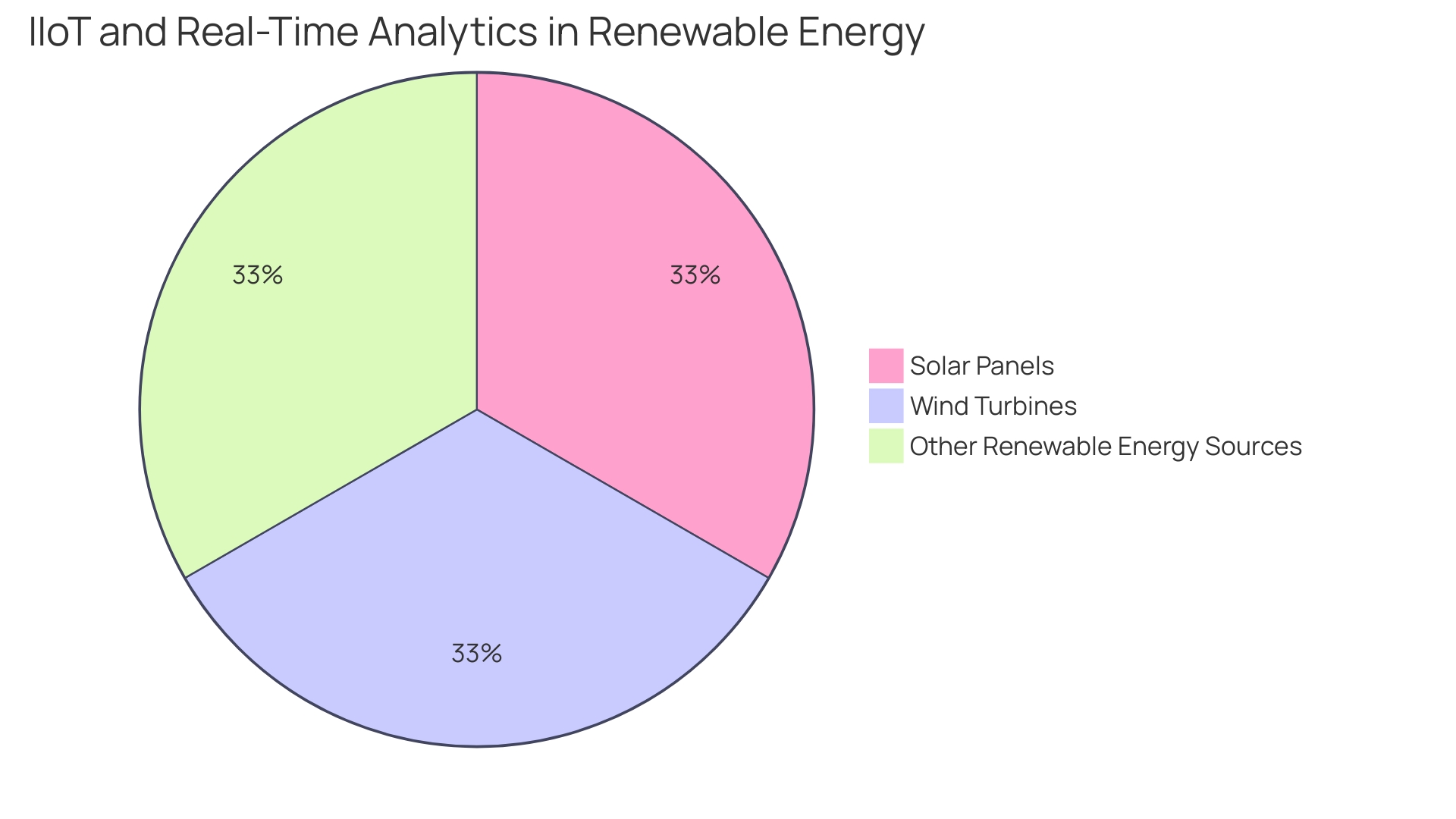Introduction
The oil and gas industry is constantly evolving, driven by advanced technical innovations that shape its trajectory for years to come. From the utilization of cutting-edge drilling solutions to the integration of automation and digital technologies, the industry is at the forefront of technological progress. Additionally, the application of Enhanced Oil Recovery (EOR) techniques and the integration of subsea systems and robotics are revolutionizing production practices and enhancing operational efficiency.
Furthermore, real-time data analytics and monitoring systems are optimizing decision-making processes and ensuring the mechanical integrity of assets. These advancements reflect the industry's commitment to efficiency, sustainability, and forward-thinking strategies that will continue to drive its transformation.
Advanced Technical Innovations in the Oil and Gas Industry
The oil and gas industry is a dynamic landscape where advanced innovations drive the exploration, production, and distribution stages to new heights. Innovative drilling solutions and reservoir modeling techniques have become indispensable tools in today's energy sector. For example, progress in microchip advancements have enabled downhole telemetry that has made horizontal drilling not only feasible but more cost-effective. This progress reflects the broader trend of knowledge transfer, where advancements initially designed for one purpose find valuable applications in other sectors. PDC drill bits, which now significantly enhance oil and gas well drilling productivity, serve as a prime example, having been developed initially for geothermal well drilling by the Department of Energy (DOE).
Furthermore, the adaptation of oil and gas drilling methods has played a crucial role in the advancement of geothermal power systems, which could potentially be established in any location with adequate drilling depth. This transition towards geothermal energy, capable of being harnessed from the earth's heat, signifies a shift towards cleaner energy sources and highlights the adaptability of the sector.
The sector's transformation is also evident in the digital realm. Automation and digital technologies, including AI and IoT devices, are revolutionizing operational efficiency and safety. Robotics are now integral to drilling and maintenance, ensuring that operations are not only optimized but also align with contemporary safety standards.
The globalized nature of the field has further emphasized the importance of interconnected supply chains and operations across diverse geographic regions. This expansion has been facilitated by technological advancements such as 3D seismic imaging, which has dramatically improved the success rate of exploration by allowing companies to utilize data-driven approaches to identify and extract hydrocarbons.
These technological strides are not only about enhancing current operations but also about planning for the future. As the infrastructure ages, engineers are increasingly relying on simulation software and digital twin models to assess and ensure the mechanical integrity of assets. For instance, the U.S. power grid, a complex web of transmission and distribution lines, is now being modeled to determine its capacity to support new energy resources. Such simulations are crucial for streamlining project design and permitting, as well as proactively identifying equipment that may require upgrades.
Essentially, the oil and gas sector's progression towards more advanced technical innovations mirrors a dedication to efficiency, sustainability, and forward-thinking approaches that will persistently shape its trajectory for years to come.

Enhanced Oil Recovery (EOR) Techniques
The application of Enhanced Oil Recovery (EOR) techniques is pivotal for oil firms to optimize the extraction from existing reservoirs. By implementing EOR, companies tap into advanced methods—thermal, chemical, and gas injection—to invigorate reservoirs and boost production rates.
For instance, thermal injection, one of the EOR strategies, has been transformative. This method involves introducing heat to reduce the viscosity of heavy crude oil, facilitating easier flow and extraction. Chemical EOR, on the other hand, introduces polymers or surfactants to improve oil displacement in the reservoir. Lastly, gas injection, which typically involves CO2 or natural gas, is leveraged to maintain reservoir pressure and improve oil recovery.
These techniques not only enhance the output but also play a role in the digital transformation of the sector. As conventional manual inspections are replaced by contemporary digital processes, the sector gains from enhanced accuracy and decreased operational risks. For example, ExxonMobil's modernized approach to refractory inspections exemplifies the shift towards digital efficiencies in traditionally laborious tasks.
Furthermore, the adoption of the Artificial Intelligence of Things (AIoT) is revolutionizing leak detection systems, contributing to safer and more environmentally friendly operations. As oil and gas production processes become increasingly sophisticated, the integration of AIoT technologies is instrumental in addressing the complex challenges of fugitive emissions.
In the broader context of energy transition, these advancements underscore the sector's commitment to cleaner and more efficient production practices. With oil and gas still central to our energy mix, innovative EOR methods coupled with digitalization efforts signify the sector's resilience and adaptability in meeting global energy demands while striving for sustainability.
Subsea Systems and Robotics
The incorporation of cutting-edge subsea systems and robotics into offshore operations represents a significant advancement in the oil and gas sector, particularly in improving operational efficiency and strengthening safety measures. Unmanned Underwater Vehicles (UUVs), Remotely Operated Vehicles (ROVs), and Autonomous Underwater Vehicles (AUVs) are at the forefront of this revolution. These sophisticated machines are designed to operate in the most challenging depths and conditions, tailored to meet specific observational and operational requirements. The Quadroin, for instance, is an AUV developed by EvoLogics in 2021, showcasing the innovative progress within the field.
A commitment to Health, Safety, and Environmental (HSE) processes has been a cornerstone of sector leaders, with zero fatalities since 1999, underscoring the importance placed on safety beyond mere statistics. The evolution of HSE practices parallels the technological advancements in robotics, emphasizing the dual focus on employee welfare and operational excellence.
The sector is experiencing a data revolution, driven by companies like Ocean Infinity, who specialize in gathering a wide range of subsea dataâfrom geophysical to environmental. The shift towards remote and lean-crewed operations is a testament to this transformation, with predictions that such methods will soon surpass traditional crewed operations in prevalence. This data-driven approach is not only reshaping how operations are conducted but also the volume and management of data, necessitating robust data processing and quality control measures.
Moreover, the National Subsea Center and NOC Innovations have established a collaboration, forming a hub for subsea research and advancement. This collaboration aims to address complex marine issues by pooling resources and expertise to aid organizations in navigating marine environments more effectively.
In view of these advancements, the oil and gas sector is ready to adopt fully electrical subsea innovation, celebrated by initiatives such as Fram Sør. This innovation offers a diminished environmental impact, decreased expenses, and a crucial part in the overall digital transformation. The rapid uptake of such advancements is expected, as their advantages are shown on a large scale, reinforcing the belief that we are entering a progressively dynamic period of underwater exploration and operation.
Real-Time Data Analytics and Monitoring
The integration of IIoT (Industrial Internet of Things) and real-time analytics in the oil and gas sector signifies a noteworthy advancement towards operational excellence. By harnessing the power of advanced data analytics platforms and monitoring systems, companies are not only optimizing operational efficiency but also enhancing their capacity to detect anomalies and make informed decisions with immediacy. These sophisticated systems are capable of managing and analyzing vast amounts of data from assets across diverse locations, even in remote areas far from company headquarters. The implementation of such technologies enables a seamless, multidirectional flow of information, ensuring that critical data points lead to actionable insights.
With the advent of digital twin models and simulation software, the mechanical integrity of assets can now be assessed with greater precision. This is particularly important in the context of refractory inspections in the oil and gas sector, where traditional manual inspections are not only time-consuming but also susceptible to errors. The shift towards a digital approach in conducting these inspections minimizes downtime and enhances safety, ultimately leading to cost savings and improved asset management.
Moreover, the urgency to modernize emissions detection is evident in the sector's shift away from conventional manual routines to a more technology-focused strategy. The integration of AI-powered geospatial analytics has revolutionized the detection and measurement of methane leaks, aligning with the global push for environmental responsibility as highlighted by the new emissions goals set at the COP28 conference. This technological transformation is instrumental in addressing the challenges posed by fugitive emissions, which include greenhouse gases and volatile organic compounds, thereby promoting safer, more sustainable operations.
In conclusion, the firm's adoption of these cutting-edge technologies reflects a broader industry trend towards digitalization and smarter asset management. The benefits of such advancements are clear: improved operational efficiency, enhanced safety, and a better understanding of asset performance, all of which contribute to making well-informed, timely decisions for the oil and gas sector.

Conclusion
In conclusion, the oil and gas industry is undergoing a significant transformation driven by advanced technical innovations. These innovations, including cutting-edge drilling solutions, automation, digital technologies, and enhanced oil recovery (EOR) methods, are shaping the industry's trajectory.
The integration of subsea systems, robotics, and real-time data analytics is enhancing operational efficiency and safety measures. Unmanned underwater vehicles (UUVs), remotely operated vehicles (ROVs), and autonomous underwater vehicles (AUVs) are revolutionizing offshore operations, while real-time data analytics and monitoring systems are optimizing decision-making processes.
The industry's commitment to sustainability is evident in the application of EOR techniques, which boost production rates while reducing environmental impact. Thermal, chemical, and gas injection methods invigorate reservoirs, contributing to cleaner and more efficient production practices.
These advancements not only improve current operations but also pave the way for the industry's future. The integration of simulation software, digital twin models, and AI-powered analytics ensures asset integrity, streamlines inspections, and addresses emissions detection challenges.
Overall, the oil and gas industry's adoption of advanced technical innovations reflects its commitment to efficiency, sustainability, and forward-thinking strategies. These advancements improve operational efficiency, enhance safety, and enable well-informed decision-making, positioning the industry for continued transformation.




